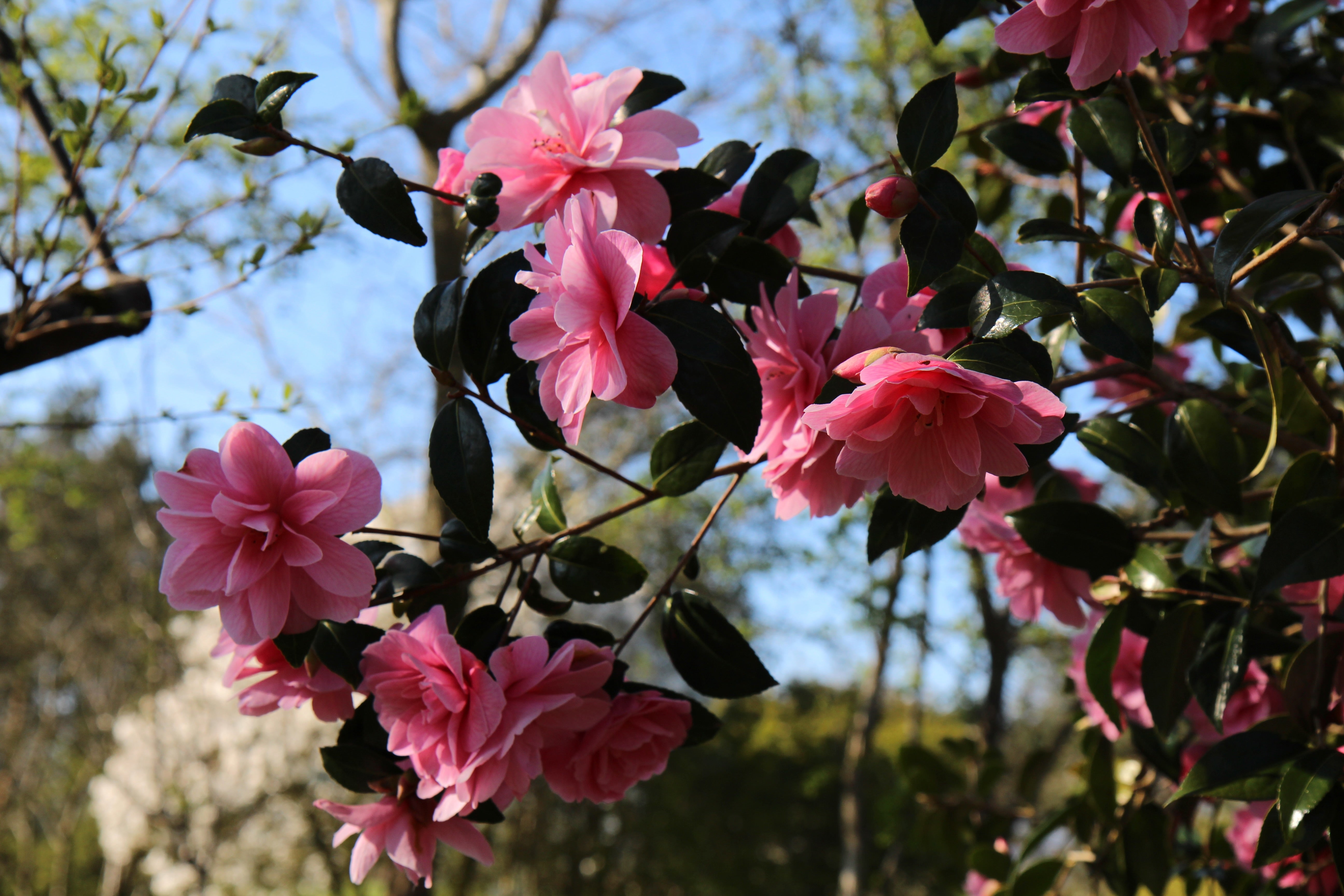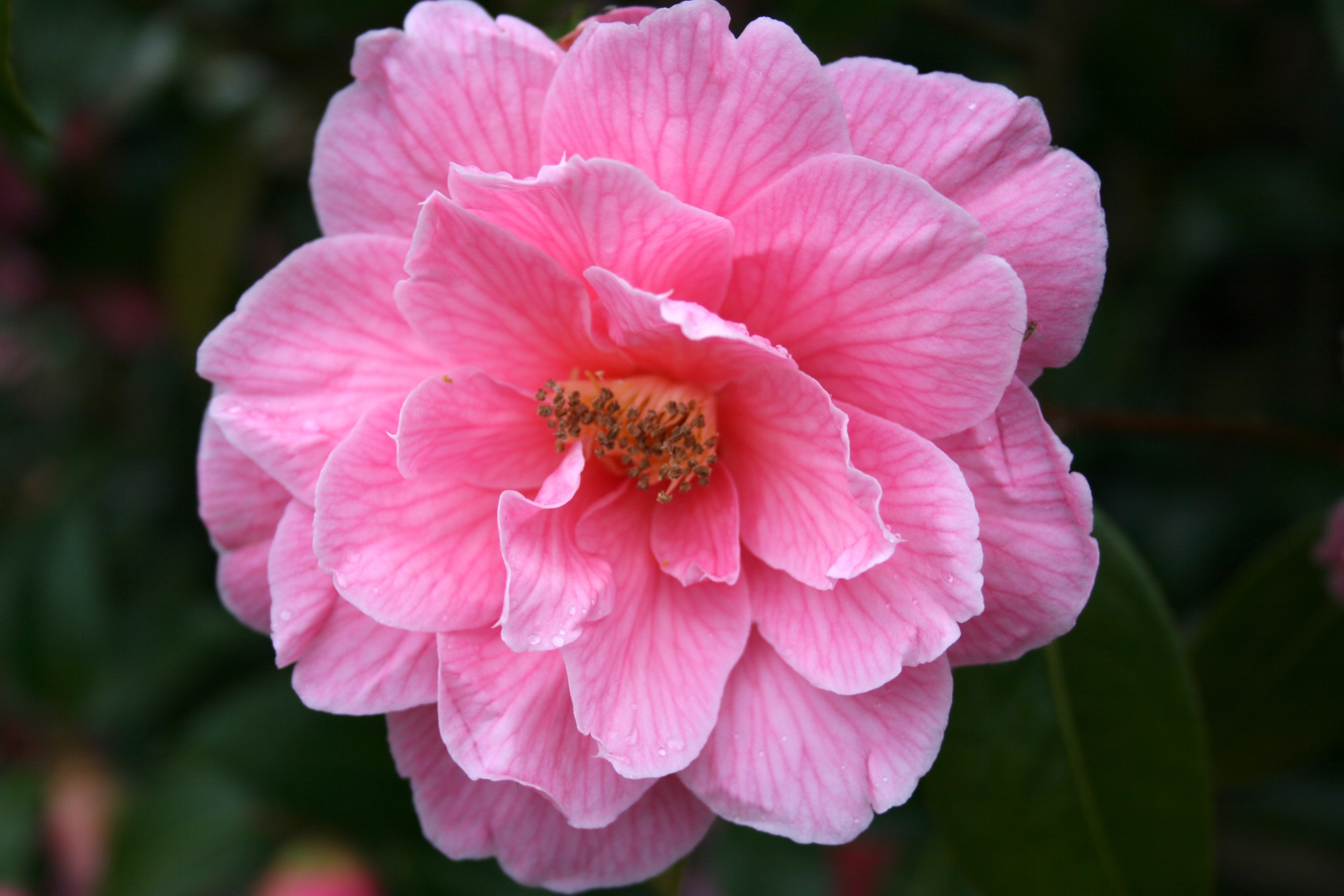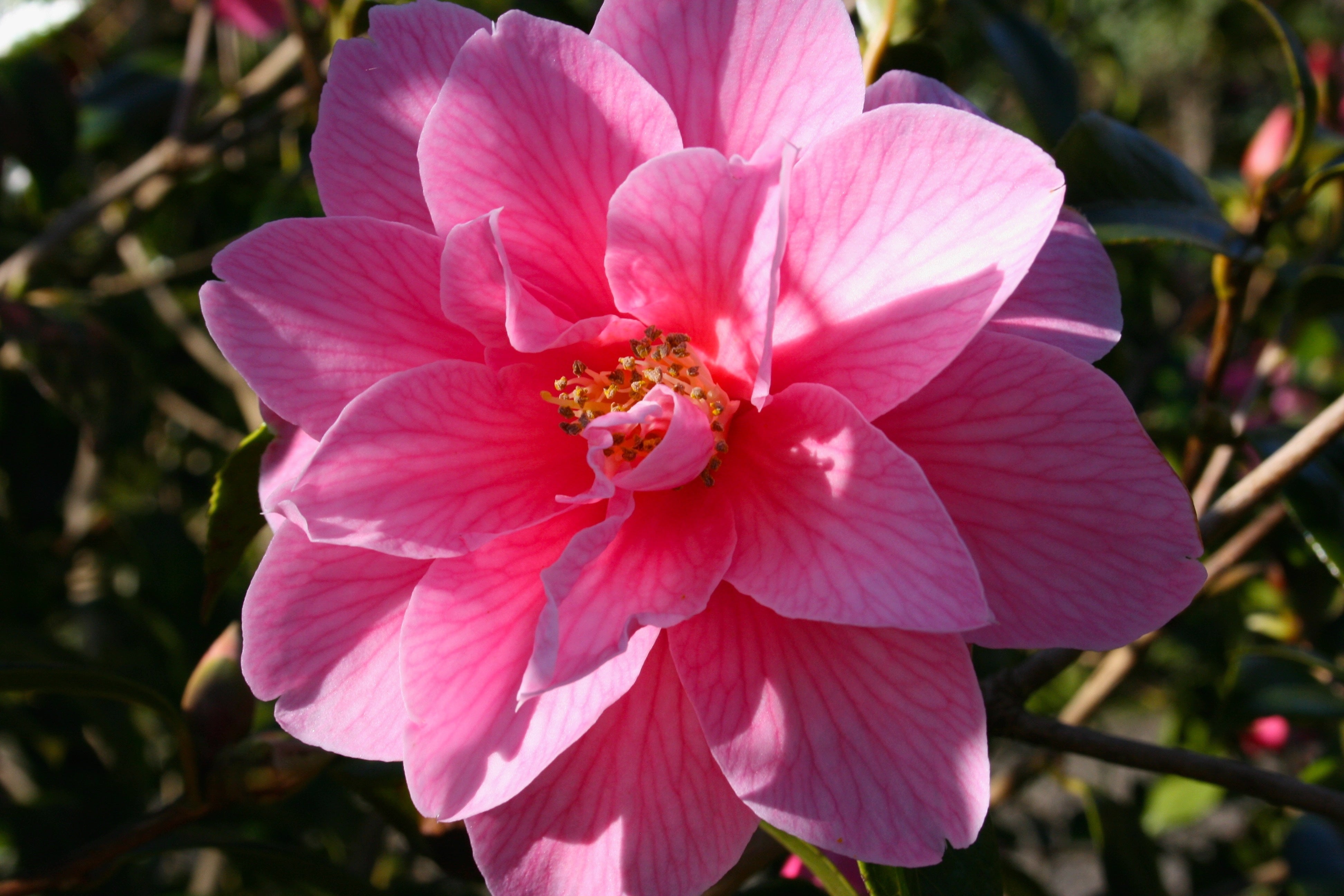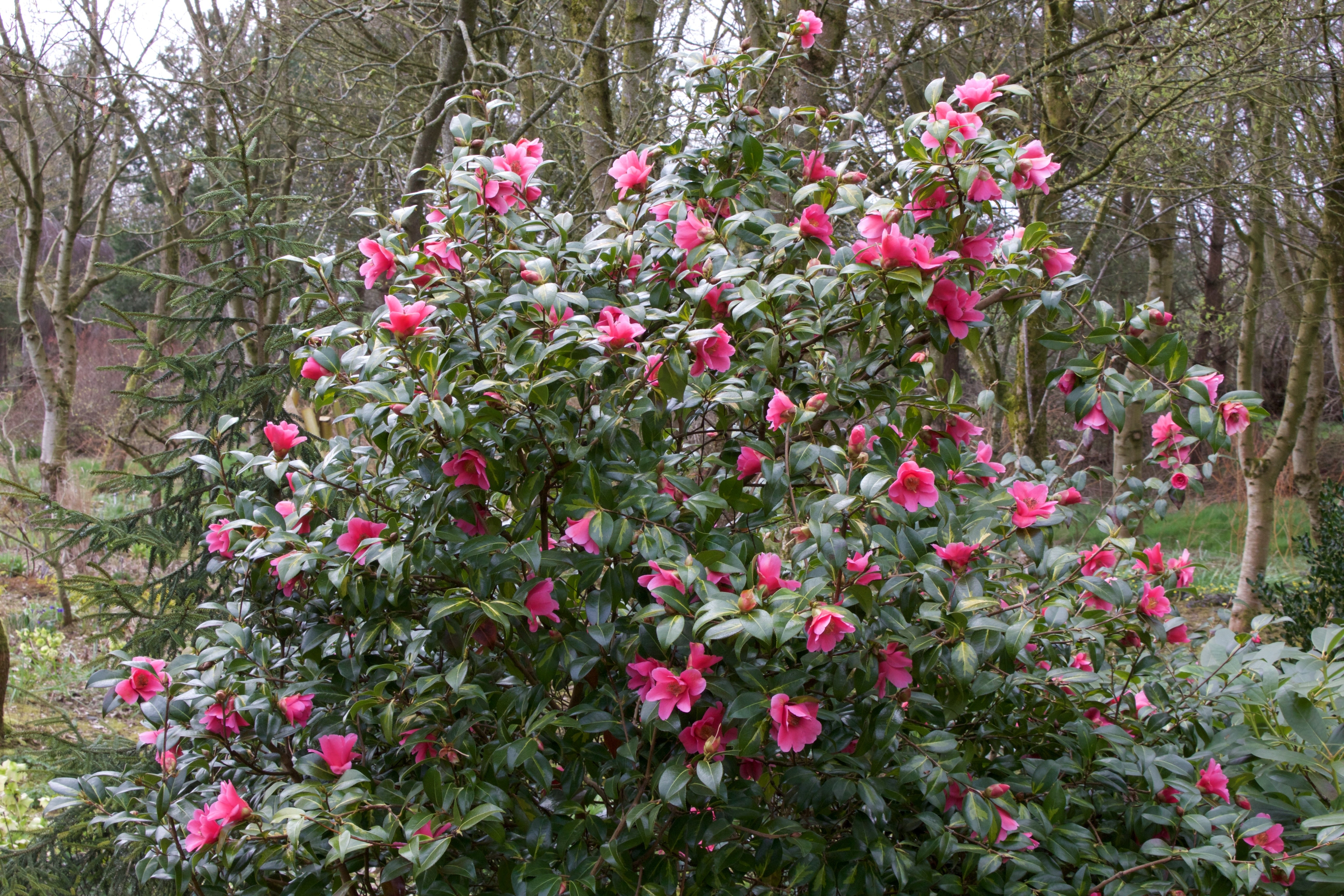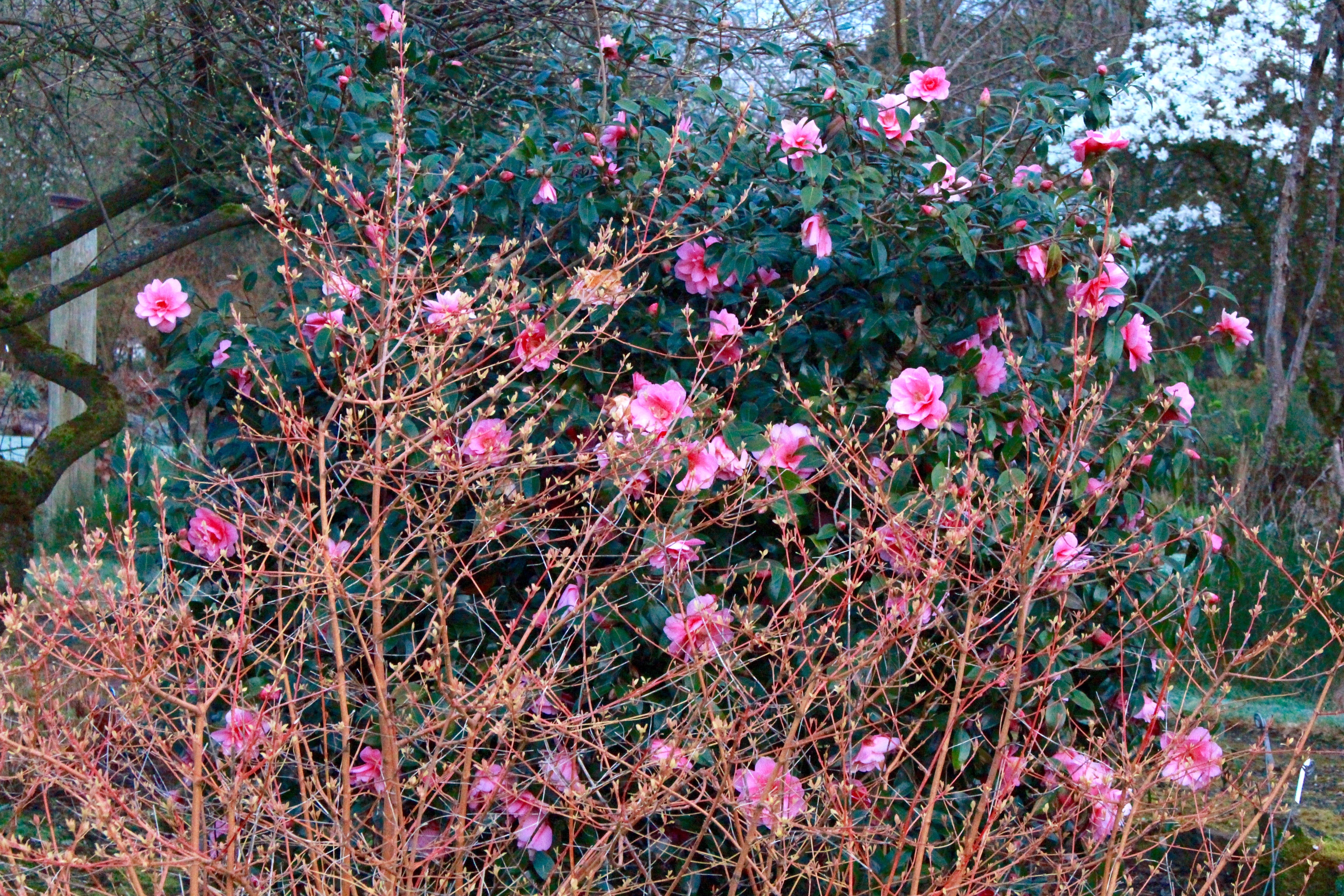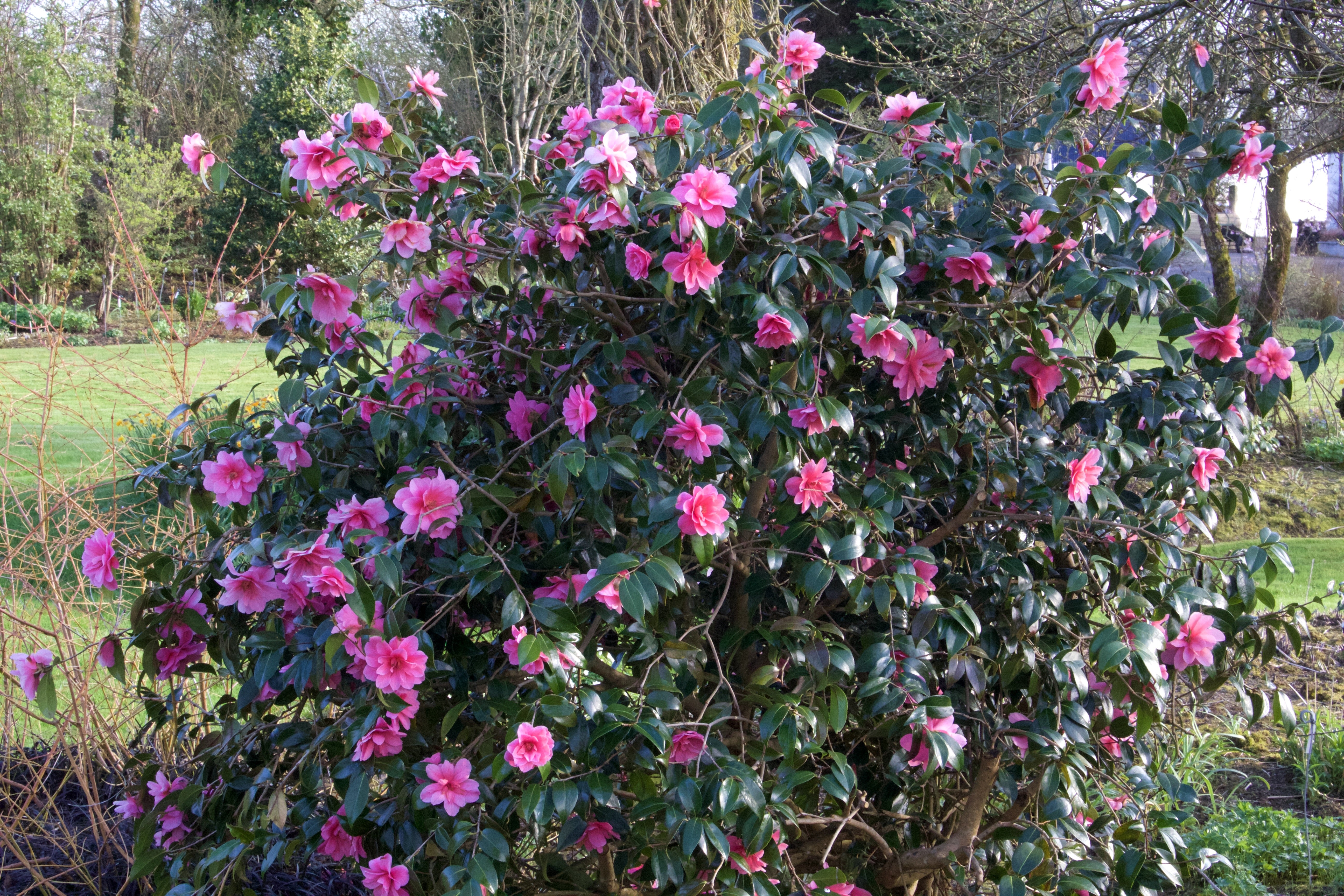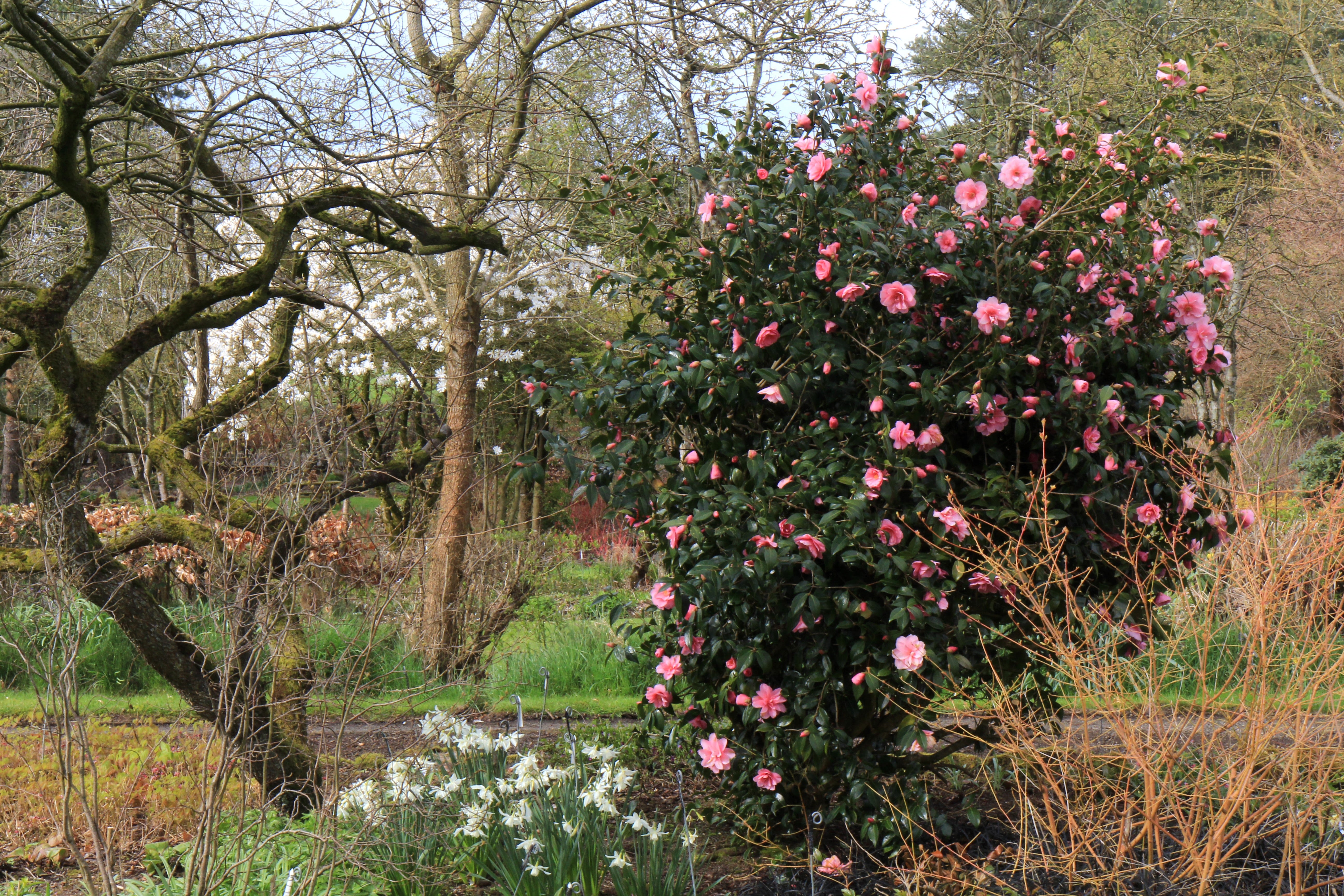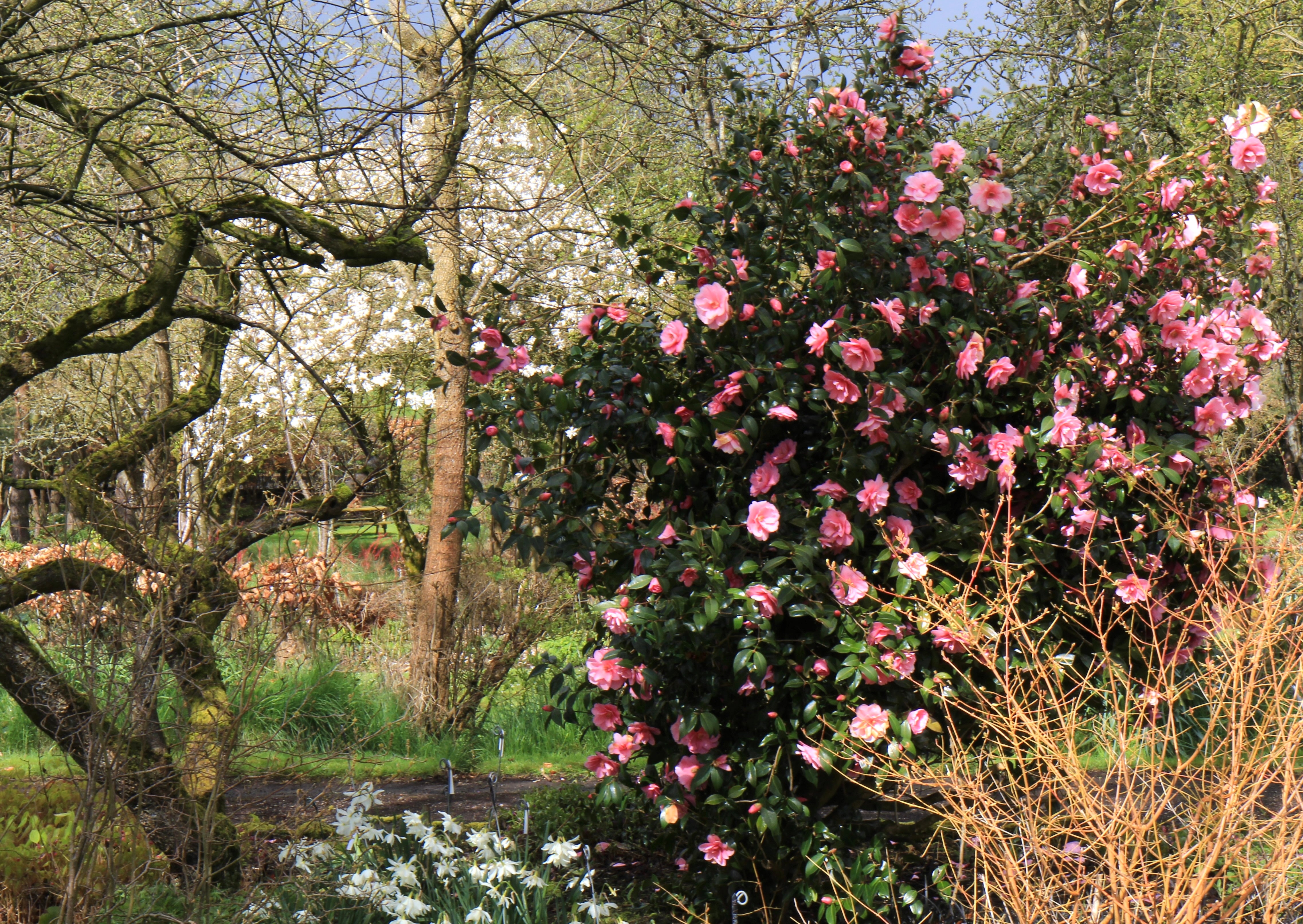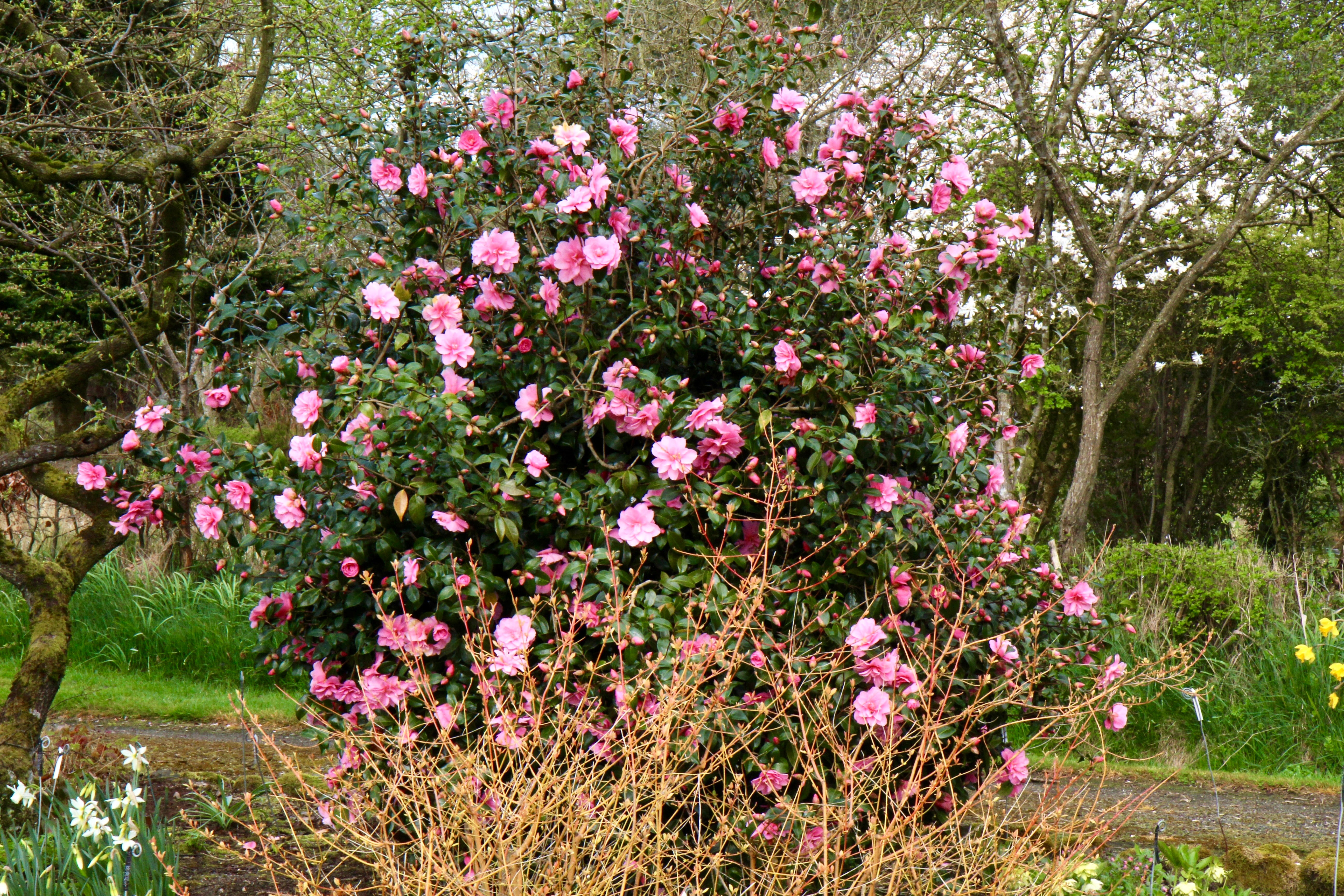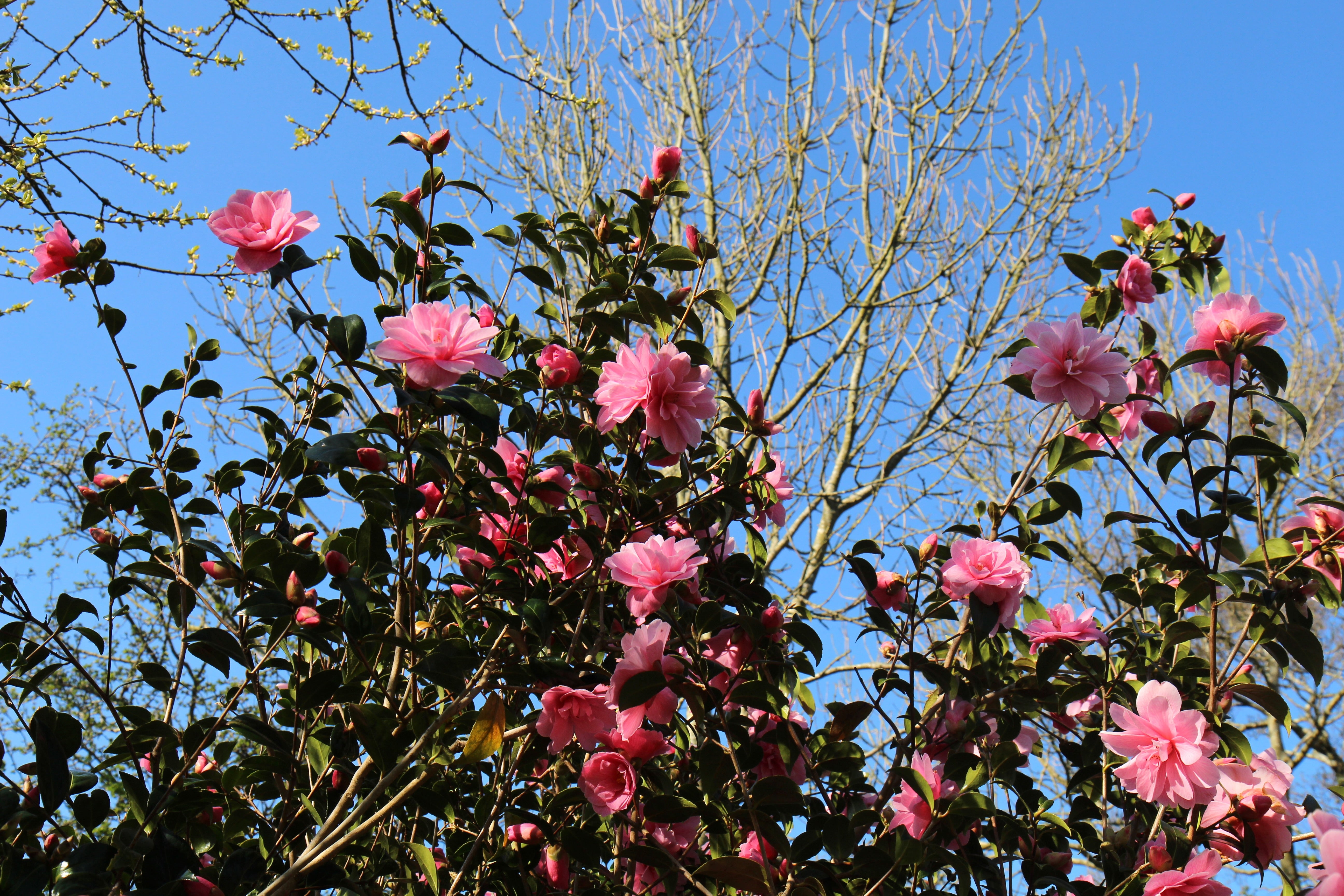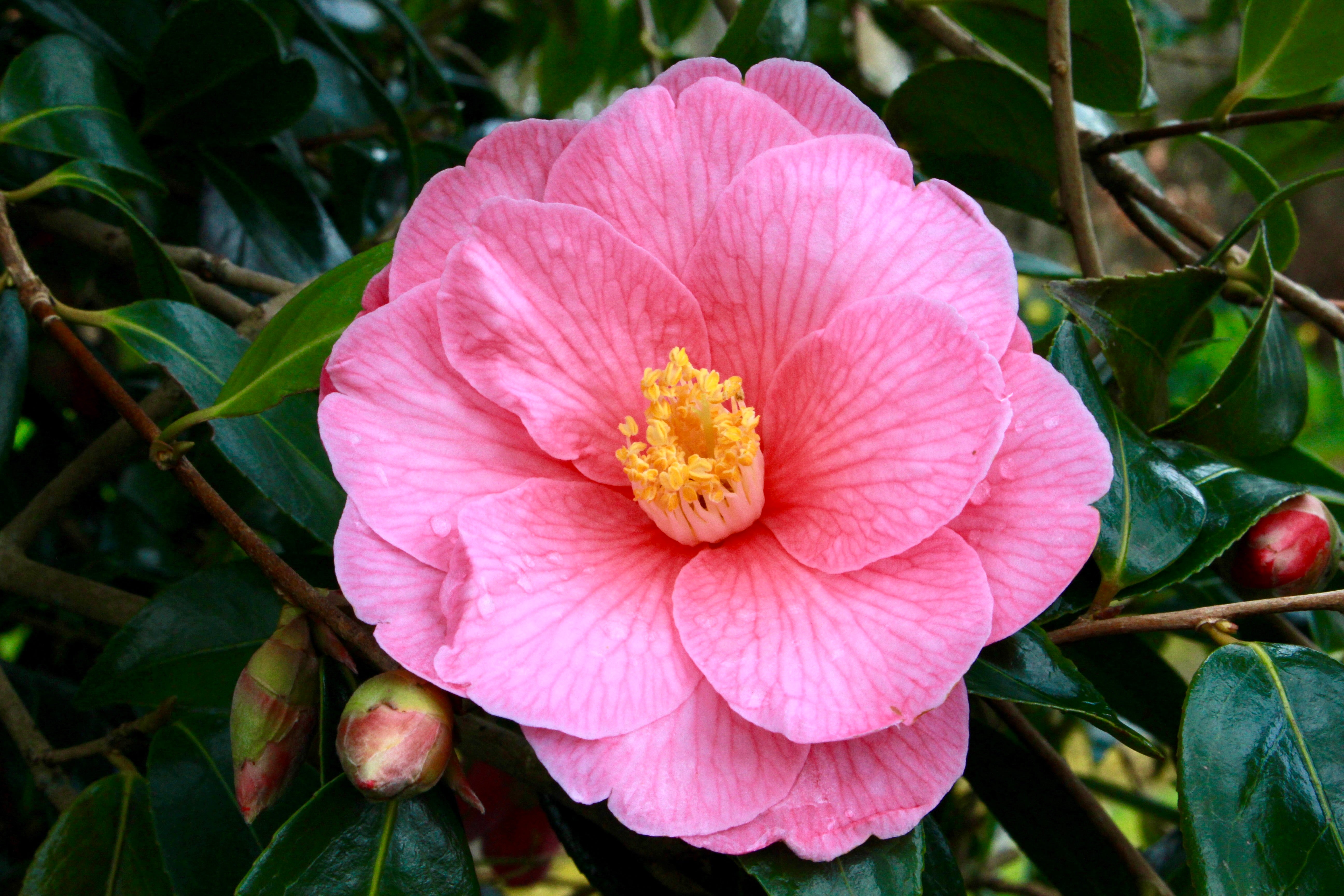Camellia x williamsii 'Donation'
Approx. 0.5 litre pot
About this cultivar:
Camellia x williamsii ‘Donation’ is a vigorous, upright evergreen shrub that was raised at Borde Hill by Colonel Stephenson R Clarke and in 1941 was awarded the prestigious Royal Horticultural Society’s Award of Garden Merit (AGM) for its outstanding performance, ornamental value, and reliability.
Its flowers are large and semi-double, with delicately waved petals in a glowing, rich pink with a hint of lavender. Blooming in late winter through spring the flowers often appear in profusion and are long-lasting, both on the plant and as cut blooms. The foliage is dark green, glossy, and leathery, providing year-round structure and contrast.
It’s more cold-hardy than many Camellia japonica types, making it suitable for a wide range of garden conditions in temperate regions. It also has a reputation for being relatively low-maintenance once established.
The species Camellia x williamsii is a hybrid between Camellia saluenensis and Camellia japonica, originally bred by J.C. Williams of Caerhays Castle in Cornwall—a key figure in the development of the williamsii group of Camellias.
- Position: Full sun, partial shade
- Soil: Almost any soil, grows well in Ballyrobert
- Flowers: February, March, April, May
- Other features: Grows well in Ballyrobert, Royal Horticultural Society Award of Garden Merit (RHS AGM)
- Hardiness: H5 - Hardy in most places throughout the UK even in severe winters (-15 to -10°C), Fully hardy, grows well in Ballyrobert
- Habit: Bushy
- Foliage: Evergreen
- Height: 200 - 400 cm (6 - 12 ft)
- Spread: 150 - 300 cm (5 - 10 ft)
- Time to full growth: 10 to 20 years
- Plant type: Shrub
- Colour: Green, pink
- Goes well with: -
About this genus:
Camellia is a genus of flowering plants in the tea family, Theaceae, made up of over 200 species of evergreen shrubs and small trees. Native to eastern and southern Asia—from the Himalayas and Japan, down through China, Vietnam and into Indonesia—Camellias have been grown and loved for centuries; over 50,00 cultivars named! The genus was named after Jesuit botanist Georg Kamel, though funnily enough, he never actually saw a Camellia in person!
The most famous Camellia of all is Camellia sinensis, the plant responsible for that daily cup of tea (yes, real tea comes from Camellia leaves!). But in gardens, we more often see Camellia japonica, Camellia sasanqua, and their hybrids—prized not for brewing but for their gorgeous flowers and lush foliage.
Camellias are usually evergreen with thick, leathery, glossy leaves—often dark green and with finely serrated edges. They’re arranged alternately on the stem, and even without flowers, they look quite smart. Flowering times depend on the species and variety—some bloom in autumn, others in winter or early spring. The blooms are what Camellias are all about: they can be single, semi-double or fully double, in colours from pure white through pink to deep red. Some even have a very soft scent, though many are scentless—don’t expect a perfume cloud!
Fruit? Yes, technically. Camellias do produce woody capsules that split open when ripe, but they’re not exactly ornamental. If you’re growing Camellias for the showy flowers, the fruit is a bit of a botanical footnote.
The ones we propagate and sell will grow almost anywhere that isn't too extreme. They are pretty relaible with us! See photos!
In the garden, Camellias bring an air of elegance and calm, whether you plant them as standalone shrubs, informal hedges, or in pots. Their evergreen nature means they look good year-round, and when in flower, they’re often breathtaking when nothign much else is showing. Plus, they’ve got that timeless, slightly aristocratic feel—like something you’d see in a classic Japanese garden or the grounds of an English stately home. If you’ve got the soil, and a little patience, Camellias are well worth the space.

